Listen In to the Cornell University Line Up
Cornell University founder, Ezra Cornell’s goal was “to do the greatest good.”
A number of the University’s experts have upheld that mission by sharing their research and knowledge with you through Vineyard Team’s Sustainable Winegrowing Podcast.
Click on a title to listen in to this incredible lineup from Cornell University.
|
| Plants by nature are designed to interact with light. Satellites can measure the light reflected by plants to detect grapevine diseases before they are visible to the human eye. Katie Gold of Cornell AgriTech is trailblazing remote disease detection with imaging spectroscopy also known as hyperspectral imaging. |
|
| What makes Sour Rot so challenging for wine grape growers is that it is a disease complex. Hans C. Walter-Peterson of Cornell Cooperative Extension explains how yeasts get into the berries and ferment the sugar out in the vineyard. Bacteria follow up, feasting on the alcohol, converting it into acetic acid – an unwelcome component in winemaking. And, the disease is spread rapidly by fruit flies. Hans shares methods to reduce Sour Rot disease pressure and an exciting new non-chemical control including UV light for sterilization. |
|
| Composting is taking diverse organic material and making a habitat for the microbes that will process the material. Jean Bonhotal of Cornell Waste explains that there are three necessary ingredients to make a great compost plus the most important factor, which is temperature. |
159: Under-Vine Vegetation to Control Vine Vigor |
|
Under vine cover crops can both improve soil health and control vine vigor. Justine Vanden Heuvel of Cornell University and Michela Centinari of Penn State University have trialed different cover crops to find the best plants for vineyards. By adding a cover crop under the vine, growers can impact the size of the vine by stopping vegetative growth at version. Ground cover has additional benefits on the soil including decreasing the impact of water drops, improved water infiltration, increased carbon, soil aggregate stability, and microbial activity. Listen in to learn which cover crops are best to improve the overall sustainability of a vineyard. |
|
| The Efficient Vineyard Project uses three phases to help growers improve their farming techniques; Measure, Model, and Manage. Terry Bates of Cornell University knew that growers were aware that variation in the vineyard was important to manage, but they did not know how to work with spatial data. The three phases create a foundation to make data work for each grower. |
|
|
UV lamps have been used in the medical field, food processing, and sterilization for 75 years but application on plant disease management only began in the 1990s. David Gadoury of Cornell University is part of a large team of international researchers testing this technology on a variety of crops. |
100: New Grape Disease Sensing Technology with Hyperspectral Imaging |
|
Once a vineyard manger has found disease there is often not much to be done, they are merely mitigating loss. Katie Gold of Cornell AgriTech is experimenting with imaging spectroscopy (also known as hyperspectral imaging). From autonomous rovers to spacecraft, the goal to detect disease earlier when management is going to be both minimal and successful. |
|
|
Bruce Reisch of Cornell University, specialized in the development of new wine and table grape varieties, as well as new grape breeding techniques. Of the more than 60 grape species available, most of the grapes we are familiar with come from European vitis vinifera. Unfortunately, this species offers little disease resistance, but other species have better sources. Developing new hybrids is a 15 to 25 year selection process looking at all attributes from berry size to wine quality plus lengthy trials. Today there is a high acceptance of hybrids and some new ones are even being used in varietal wines. |
|
|
Wayne Wilcox, Professor Emeritus of Plant Pathology and Plant-Microbe Biology at Cornell University, spent his career on the applied biology and integrated management of grapevine fungal diseases. Wayne looks at berry susceptibility changes throughout the season to determine when control programs need to be maximized. Ultimately, his applied research sought to discover what makes a “disease tick” and use that knowledge to learn how to better target the disease. |
51: Effective Vineyard Spraying |
|
Leading expert Dr. Andrew Landers of Cornell University discusses his more than thirty years of research and development on pesticide sprayer technology to reduce pesticide use through accurate, efficient delivery of the product to the plant. |
25: Under-Vine Cover Crops |
|
Dr. Justine Vanden Heuvel, Associate Professor of Viticulture at Cornell University, describes how controlling vine vigor is difficult in regions with high organic matter soils and plentiful summer rain. Growing certain cover crops in the vine row can devigorate vines by as much as 30%. Others do not devigorate vines, but do keep soil in place. In vineyards on slopes under-vine cover crops can reduce or eliminate the need for herbicide applications preventing the off-site movement of soil, pesticides, and nutrients. |
17: New Discoveries about Sour Rot |
| Sour rot is a disease complex composed of various yeast, fungi, and bacteria that ferment grape juice released from wounded berries. Megan Hall has demonstrated that the symptoms of sour rot will only develop when fruit flies (Drosophila spp.) are present. Spraying antimicrobial materials with an insecticide weekly from 15° Brix until harvest has shown success at stopping the advance of sour rot. |



 129: The Efficient Vineyard Project
129: The Efficient Vineyard Project 117: Grapevine Mildew Control with UV Light
117: Grapevine Mildew Control with UV Light 87: Developing New Winegrape Varieties
87: Developing New Winegrape Varieties